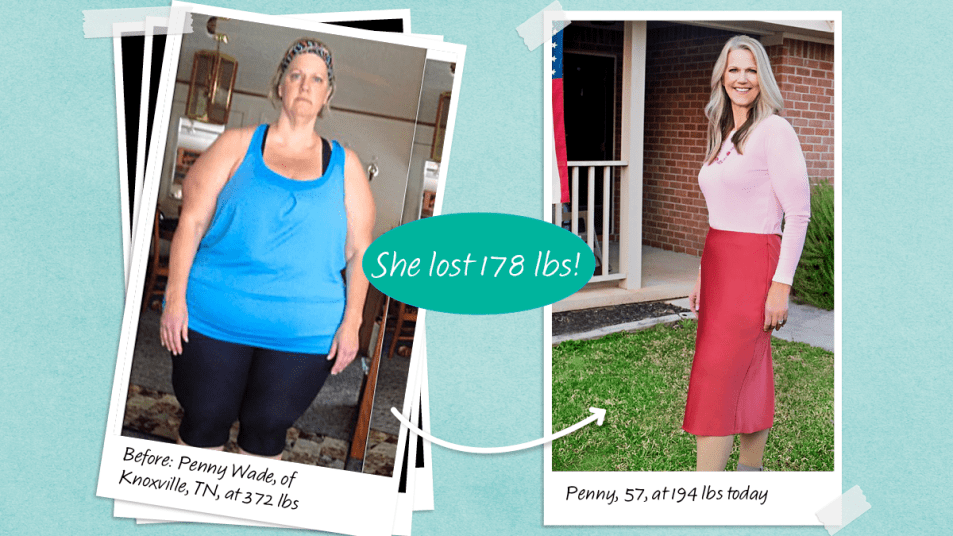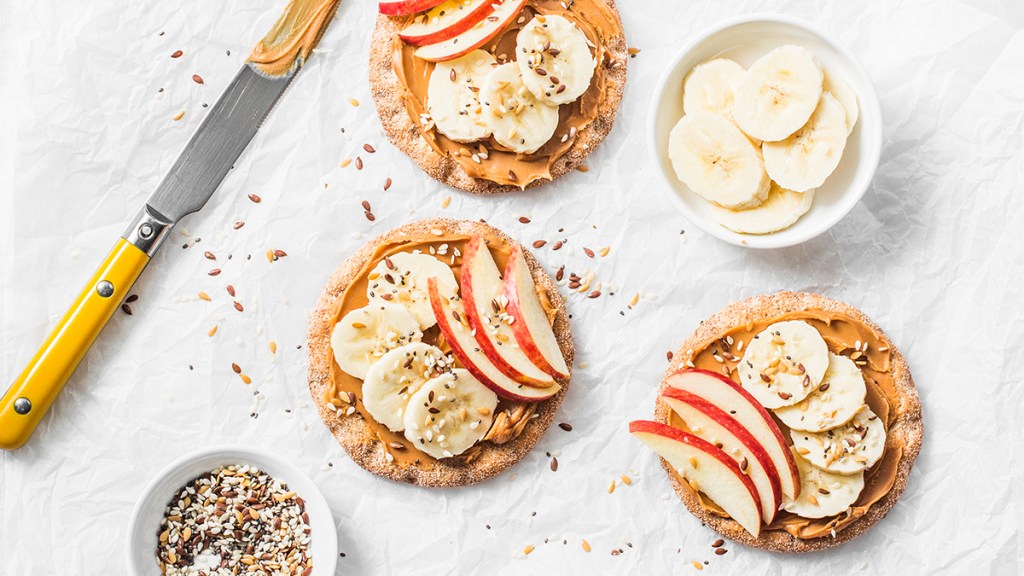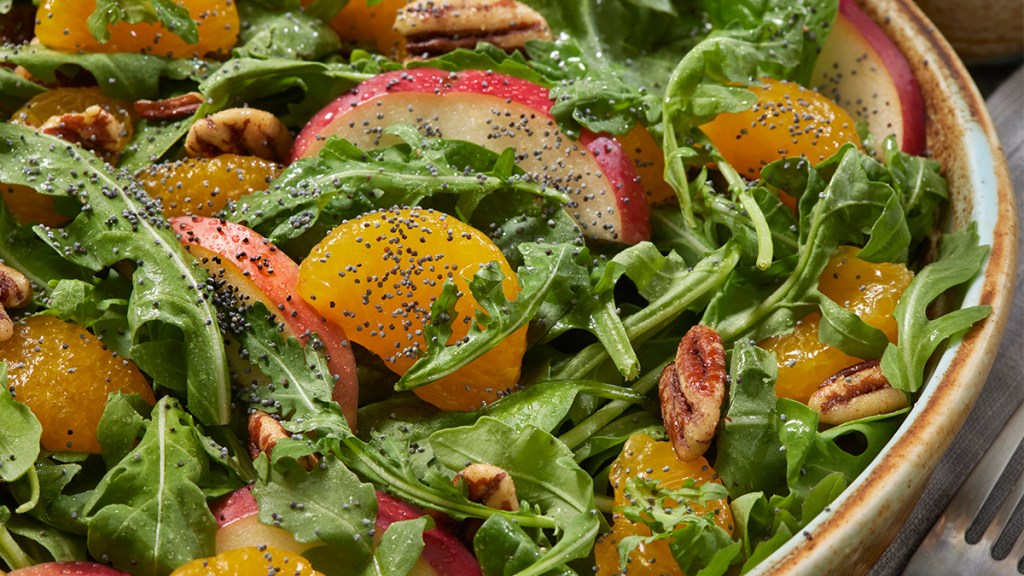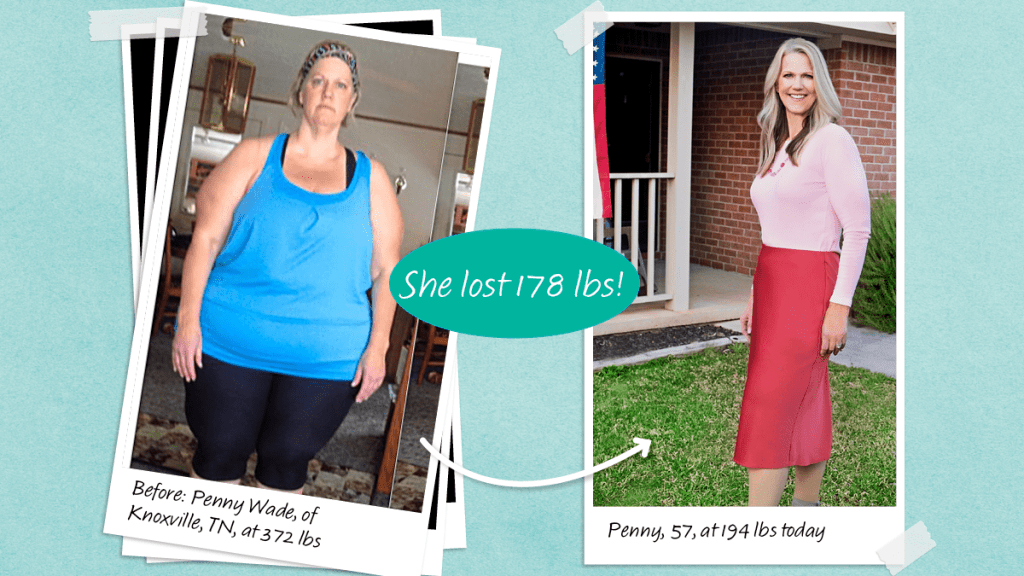New Science Reveals That Simply Adding Two More Servings of Veggies a Day Can Powerfully Speed Weight Loss
One study found that those who ate a plant-based diet that included meat lost 1,398% more weight

We’ve all heard people singing the praises of their plant-based diet journeys: how they lost weight and gained energy, glowing skin and total health. We want those things too! And we know this is an incredibly healthy way to eat. Experts point out that 53% of Americans are choosing to eat more plant-based foods — a number that keeps climbing. The problem? The idea of giving up meat, cheese and dairy feels tough to do forever. That’s why we were intrigued to hear about the new “plant slant” way of eating. The term was coined to describe how folks who live past 100 years of age in healthy Blue Zones tend to eat: Some meat, sure, but mostly plants. That’s why we sought out experts and real women who’d been successful on plant-based eating plans to give us insight into the best way to increase the number of plant-based food we’re eating in a way that leads to lasting increases in health and decreases in weight — but without sacrificing the meat and dairy we love. We learned that there are new approaches that make plant slant easier than ever to do, including a 30-day plant-based diet plan that is changing lives.
Why strict plant-based diets are hard to do
We probably don’t need to explain this to you — it’s just tough to give up our favorite foods. Strict vegan and vegetarian diets have steep drop-off rates — 86% of folks quit within a year. Why? Those plans are often hard to follow for all time. It makes sense: No one wants to feel stuck, unable to eat out at restaurants or enjoy a hot dog at a ballgame or a creamy dessert around the holidays. A recent survey reveals that 74% would of us rather pick and choose their plant-based options rather than committing to a 100% plant-based diet full time. (Click through to learn about the link between vegetarianism and depression.)
How plant slant differs from vegan or vegetarian
You’ve heard of vegan diets, which exclude all animal products including eggs and dairy, and vegetarian eating, which excludes all meat. And you’ve probably heard of plant-based plans that exclude meat as well. But taking a hard line doesn’t necessarily produce the best weight loss result. “The evidence suggests we could all benefit from eating more plants, but that doesn’t necessarily have to mean only plants,” maintains gut-health researcher Megan Rossi, PhD, author of Eat More, Live Well.
Harvard-educated wellness coach Julie Wilcox, author of The Win-Win Diet, assures, “Plant-based eating can be maintained without cutting out entire food groups, including meat and dairy, or sacrificing the pleasure of eating.” What’s more, adding more veggies to your diet is a surefire way to lose weight: Research shows that Americans are so starved for plants that eating a mere two extra servings of vegetables a day can trigger fat loss — without dieting!
A growing number of other experts agree this plant slant way of eating is healthiest. What’s more: Harvard scientists have outlined a new meal-plate model that looks a lot different from our old-school meat-focused meals. Their latest recommendation says 50% of meals should consist of fruits and veggies, 25% grains and 25% lean protein like chicken and fish. Once again, it shows the healthy new trend to eat more plants, with room for some meat cheats.
Enter Ian K. Smith, MD, bestselling author of The Fat Smash Diet. Dr. Smith set out to identify the best way for women to harness the power of plants in a 30-day diet plan. What he found: Mixing meat-based meals into a plant-based diet plan makes the approach more effective — and easier. Indeed, a study conducted at the University of South Carolina shows that people on a vegetarian diet who enjoyed some meat lost 1,398% more weight than those on a traditional calorie-restricted diet. “People can reap the benefits of plant-based eating without totally giving up meat and fish,” says Dr. Ian. (Click to read more about Dr. Ian’s diet approach for women over 40.)

An overview of Dr. Ian’s 30-day plant-based diet plan
In a typical American diet, 70% of the foods we eat are animal-based products and 30% are plant-based. But using new research, Dr. Ian set out to switch that balance. He recommends eating a healthier “plant slant” ratio of 70% plant-based foods to 30% animal-based foods. This simple strategy offers the perks of plants and also the dietary flexibility women need in their busy lives. This slant toward plants leaves plenty of room for cheats like cheese, meat and eggs. With this easy reversal, there’s no need to go 100% vegan to experience what Dr. Ian calls “the truly transformative powers of plants.” Dr. Ian was so passionate about this eating concept he wrote a new book about it called Plant Power. He says the shortcut to outsmarting age-related weight-gain is “flexing” your diet to reap the benefits of eating plant-based meals, while still enjoying occasional meat, cheese and eggs.
The weight-loss perks of taking a plant slant
Eating 70% plants is the key to outsmarting lifelong diet struggles, explains Dr. Ian. How? “Plant-based diets are typically lower in calories and higher in fiber than meat-based diets, and it’s a good source of craving-curbing plant proteins, which all together give a weight-loss advantage.” Taking a plant slant also delivers serious vitamins, minerals and antioxidants that heal the gut microbiome to rev metabolism further. When Dr. Ian tested the plan himself, he found, “Results were immediate. I felt lighter, more energetic and more alive!” He adds, “There’s no doubt everyone can lose weight on this plan.”
The health benefits of plant-slant eating
Slimming is just the beginning. Following Dr. Ian’s advice, women lower their risk of disease. There’s a 53% lower risk of developing diabetes after adopting a more plant-based diet plan. Women eliminate GI issues, boost immunity, restore thinning hair, relieve autoimmune symptoms and improve blood pressure. Plus mood boosts by 106%. Plant-based eaters also enjoy a 50% reduced risk of developing hypothyroidism, according to research.
Plant slant is ideal for women over 50
As we get older, boosting plant intake is easier to stomach — literally. The reason: As we age, it becomes more difficult to digest meat. That, combined with hormone fluctuations that occur around midlife for women, can stall weight loss even more. No wonder, Dr. Ian says, “Switching to a mostly plant-based diet is especially beneficial for women over 50.”
Dr. Ian adds, “Be excited that you’re fueling your body in a way that maximizes weight loss and longevity!” In fact, according to a study conducted in Norway and published in PLOS Medicine, people over the age of 60 lived an average of 8 extra years by making the switch from a modern Western diet to the more-plant based diet. Wow!
Want to try it yourself? Keep reading to learn more specifics about how to start your 30-day plant-based diet plan.
Complete guide to Dr. Ian’s 30-day plant-based diet plan
Using Harvard research and his experience helping millions of women, Dr. Ian created a relaxed 30-day program to help women power off pounds. On his plan, 70% of the foods you eat will be plant-based. You’ll enjoy three meals and three snacks every day, loading up on slimming veggies, fruit, legumes, nuts and seeds, but you’ll have the freedom to reach for occasional animal-based items like yogurt, lattes and steaks.
To track your progress throughout the month, follow Dr. Ian’s Plant Power Point System. How it works: You start with 32 food points for the week (one for each meal and 1⁄2 for each snack). Devote 22 of those points (or 70%) to plant-based meals and snacks and the remaining 10 points (or 30%) to animal-based products. The beauty of this flexible plan: You decide how to configure your meals and cash in on those scrumptious cheat points. Dr. Ian says, “This plan offers people the ability to harness the advantages of being more plant-based, without the stress of a strict diet.” To get the best results, incorporate these tips…
People often worry that switching to a mostly plant-based lifestyle will be more expensive than their old way of eating, but it’s not the case, assures Dr. Ian, who notes, “It saved me a lot of money.” According to research published in Nutrition Journal, people save $1,260 a year by eating plant-based. And don’t feel pressured to buy organic. Dr. Ian says, “An organic lemon has no more nutrients than one that was conventionally farmed.”
1. Ease into fiber-rich foods
We all know plant-based foods are a natural source of fiber, but increasing our fiber intake too quickly can trigger gas and bloat. So Dr. Ian suggests giving yourself a “runway” to get up and off the ground—say, by trying meatless Mondays or fruit-filled Fridays. Start with just one plant-based day a week, adding another to your routine every two weeks. By testing your engine this way, “you won’t experience withdrawal or deprivation” when it’s time to launch your full 30-day diet plan. (Click through discover how much fiber you need to lose weight and how fiber-rich bitter greens can help with weight loss.)
2. Reach for clever plant-based pairings

‘Complete proteins’ found in meat contain all nine essential amino acids that our body needs. But we can get the same result by eating legumes and grains together. So enjoy plant-based ‘complementary proteins’ together to get health and weight-loss benefits. Try combos like black beans and corn chips, or peanut butter and whole wheat crackers. Bonus: Regularly enjoying peanuts is proven to cut diabetes risk by 21%, according to Penn State University researchers.
3. Shift the spotlight
“Instead of meat being the star of the dish, make it a supporting actor,” says Dr. Ian. “Use vegetables as the main attraction.” Feast on a bowl of coconut lentil curry topped with 3 oz. of chicken or a big avocado, mushroom and spinach salad topped with salmon.
4. Don’t stress about carbs
“Carbs are the body’s number-one fuel source, so eliminating them on this plan would be a mistake,” says Dr. Ian. Instead, opt for clean carbs, like whole grains or Dr. Ian’s top pick: oats, which you can sprinkle in yogurt or bake into cookies.
5. Try this powder
Smoothies are a great way to get protein while reducing meat. Dr. Ian suggests adding rice protein isolate powder with less than 25 or 50 calories per serving into a fruit or vegetable smoothie. Our tester likes Ora So Lean & So Clean daily superfood plant protein in vanilla (Buy at Ora.Organic, $39.99 for 20 servings). It’s a favorite of Justin Bieber and wife Hailey Bieber according to their viral TikTok recipe. (Click to learn more about the best protein powders to stay energized.)
6. Read labels
When shopping for plant-based meat alternatives, look for low-sodium, minimal-ingredient options with at least 10 grams of protein for every 3-oz. serving. For a ground meat substitute, try Noble Plate Plant-Based Meatless Crumbles (Buy at Wholesome Provisions, $10.95 for 6 oz)
7. Make salads more filling

The easiest way to transition to 70% plant-based is to make sure that one meal every day is a salad, says Dr. Ian. With this simple strategy, he says, “You’re already halfway there.” He loves adding nuts, pumpkin seeds or chia seeds as filling toppers. “The ‘crunch’ is an appetite suppressant.” (Click through for more benefits of pumpkin seeds)
8. Consider supplements
Supplements can help you get the right dose of vitamins and minerals that are easier to get from animals. Dr. Ian recommends energy-revving iron (18 mg. a day for premenopausal women; 8 mg. for postmenopausal women under a doctor’s supervision) and 2.4 mcg. of B-12 daily. (Click through to see more vitamins women should be taking daily)
Plant slant success story: Penny lost 178 lbs

Penny Wade felt like a prisoner in her body as she heard her doctor give a bleak prediction: “You’ve developed insulin resistance, so your weight will only continue to climb.”
Losing weight had been an uphill battle ever since Penny was diagnosed with type 1 diabetes, needing six shots a day. She underwent gastric bypass surgery, knowing it would only jump-start the major change needed. She recalls, “The surgeon said that because of my hormone issues, I would only be able to lose 70 pounds — that would still leave me at 300 pounds!”
To bridge the gap, Penny added more plants into her diet, including dense, superfood shakes. Within two weeks, eating the roughly 70% plant-based approach, she noticed her energy soar. Loving the flexibility, she quips, “I was fine with a Meatless Monday, but there were also times when I wanted a steak.”
Penny blasted past her surgeon’s expectations and shed nearly 200 pounds in three years. She lost 200 total body inches (17 in her waist!) High blood pressure, GERD and joint pain all vanished. She adds, “My insulin needs decreased from 74 units per day to 27.” Even immunity skyrocketed for this second-grade teacher.
Today, Penny, who lives in Knoxville, Tennessee, is “free and ready for adventure.” Preparing for a trip to Costa Rica, she says, “I’m doing all the things I dreamed about doing but couldn’t because of my weight!”
This article originally appeared in our print magazine, First For Women.
This content is not a substitute for professional medical advice or diagnosis. Always consult your physician before pursuing any treatment plan.
For more on the power of plant-based foods:
In the Weight Loss War, Eating Bean & Veggie Soups May Be More Effective Than Keto
Harvard-Trained MD’s Easy Tips to Heal Your Liver & Lose Weight Fast
The Ornish Diet Can Help You Lose Weight and Keep Your Heart Healthy
















